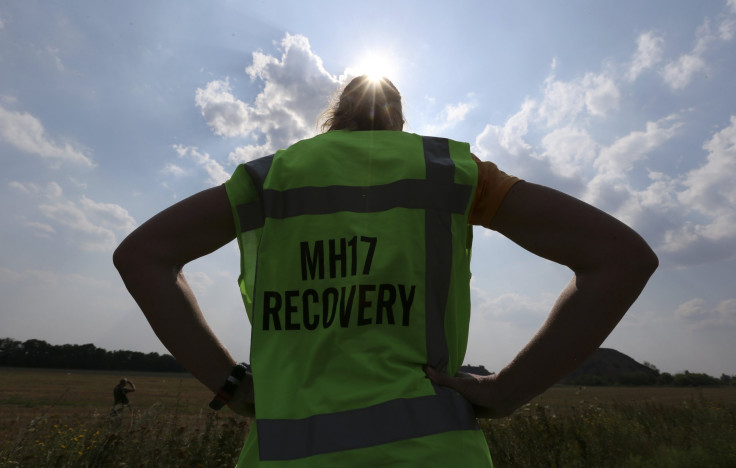Flight MH17 Broke Up In Mid-Air After Impact From Multiple 'High-Energy Objects:' Dutch Safety Board

A preliminary report of the investigation into the crash of Malaysia Airlines Flight MH17 revealed Tuesday that the jetliner broke apart in mid-air after being hit by “a large number of high-energy objects that penetrated the aircraft from outside.” The Boeing 777-200 was shot down over eastern Ukraine on July 17 in an area controlled by pro-Russian separatists, killing all 298 people on board.
The Dutch Safety Board, in its report, also pointed out that there were no signs of technical fault or a communications-linked emergency situation. However, the report did not identify the kind of objects that may have hit Flight MH17 nor did it assign blame for the downing of the jetliner. The United States and Ukraine have accused separatists in the area of bringing down the civilian plane, which was travelling from Amsterdam to Kuala Lumpur, with a surface-to-air missile provided by Russian military forces.
"The damage observed in the forward section of the aircraft appears to indicate that the aircraft was penetrated by a large number of high-energy objects from outside the aircraft," the report said. "It is likely that this damage resulted in a loss of structural integrity of the aircraft, leading to an in-flight break up."
Investigators believe the cause of the crash and how the airplane disintegrated could only be determined after more research into the incident. The findings in the initial report are reportedly based on the cockpit voice recorder, the flight data recorder and radar information.
“The preliminary report issues the first findings in a ongoing investigation. From this point on, the investigation team will be working towards producing its final report. The Board aims to publish this report within one year of the date of the crash,” Tjibbe Joustra, chairman of the Dutch Safety Board, said in a statement.
Christopher Yates, an aviation safety specialist at Yates Consulting, told the Associated Press that the report's finding "is extremely consistent with damage from a missile for the simple reason there are penetration marks.
"It must have been moving at very high velocity to create the damage," he reportedly said. "It could only be a missile of the type that would reach the altitude that would have struck the aircraft, potentially a BUK missile.”
The draft of the preliminary report has been sent for review to the countries participating in the investigation, including the U.S., UK, Malaysia, Ukraine, Australia and Russia.
"I urge all parties to work closely together to facilitate this investigation and the production of the final report," Malaysian Prime Minister Najib Razak reportedly said about the Dutch Safety Board report.
© Copyright IBTimes 2025. All rights reserved.





















